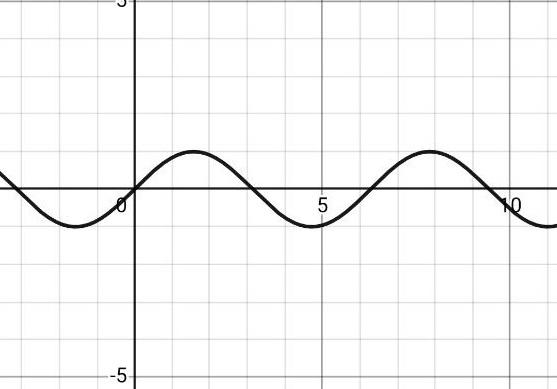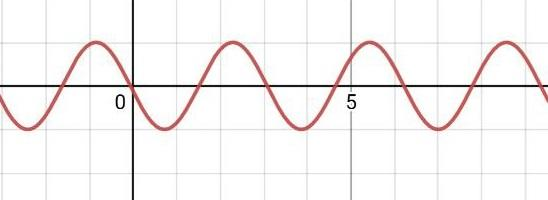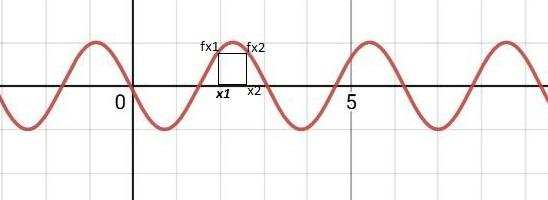
Let \(f:R \to R\) be a function defined by \(f(x) = \sin (2x - 3)\), then \(f\)is
A. Injective
B. Surjective
C. Bijective
D. None of these
Answer
216.3k+ views
Hint: Injective means \[{x_1} \ne {x_2} \Rightarrow f({x_1}) \ne f({x_2})\]or \[{x_1} = {x_2} \Rightarrow f({x_1}) = f({x_2})\]and surjective means range and co-domain of a function are equal, and bijective means injective as well as surjective both.
Complete step by step solution: We know \[f(x) = \sin (2x - 3)\]is a periodic function. 1st graph of \[\sin x\]and period of this is \[2\pi \]

Then graph of \[\sin (2x - 3)\]and period is \[\pi \]

Here period is \[\pi \]because we know in \[\sin x\]graph \[f(ax) = \dfrac{T}{a}\]where T is a time period , subtraction or addition does not affect graph time period. From graph \[\sin (2x - 3)\]

We see that \[{x_1} \ne {x_2}\]but we get value \[f({x_1}) = f({x_2})\] means for two values of pre-images we get one image, So clearly it is not injective function and it is also not bijective because for bijective it should be 1st become injective. Now check the surjective condition,
We see that the range of this periodic function varies from -1 to 1 and \[x \in R\]which is a proper subset of the real number (Co-domain), So it is not a surjective also.
Thus, Option (D) is correct.
Note: Student must Know the definition and properties of injective, surjective, one to one, many to one function, etc. also a surjective range is equal to co-domain, and in a many-one function range is not equal to the co-domain.
Complete step by step solution: We know \[f(x) = \sin (2x - 3)\]is a periodic function. 1st graph of \[\sin x\]and period of this is \[2\pi \]

Then graph of \[\sin (2x - 3)\]and period is \[\pi \]

Here period is \[\pi \]because we know in \[\sin x\]graph \[f(ax) = \dfrac{T}{a}\]where T is a time period , subtraction or addition does not affect graph time period. From graph \[\sin (2x - 3)\]

We see that \[{x_1} \ne {x_2}\]but we get value \[f({x_1}) = f({x_2})\] means for two values of pre-images we get one image, So clearly it is not injective function and it is also not bijective because for bijective it should be 1st become injective. Now check the surjective condition,
We see that the range of this periodic function varies from -1 to 1 and \[x \in R\]which is a proper subset of the real number (Co-domain), So it is not a surjective also.
Thus, Option (D) is correct.
Note: Student must Know the definition and properties of injective, surjective, one to one, many to one function, etc. also a surjective range is equal to co-domain, and in a many-one function range is not equal to the co-domain.
Recently Updated Pages
JEE Atomic Structure and Chemical Bonding important Concepts and Tips

JEE Amino Acids and Peptides Important Concepts and Tips for Exam Preparation

Electricity and Magnetism Explained: Key Concepts & Applications

Chemical Properties of Hydrogen - Important Concepts for JEE Exam Preparation

JEE Energetics Important Concepts and Tips for Exam Preparation

JEE Isolation, Preparation and Properties of Non-metals Important Concepts and Tips for Exam Preparation

Trending doubts
JEE Main 2026: Application Form Open, Exam Dates, Syllabus, Eligibility & Question Papers

Derivation of Equation of Trajectory Explained for Students

Hybridisation in Chemistry – Concept, Types & Applications

Understanding the Angle of Deviation in a Prism

Understanding Collisions: Types and Examples for Students

How to Convert a Galvanometer into an Ammeter or Voltmeter

Other Pages
JEE Advanced Marks vs Ranks 2025: Understanding Category-wise Qualifying Marks and Previous Year Cut-offs

Understanding Atomic Structure for Beginners

Ideal and Non-Ideal Solutions Explained for Class 12 Chemistry

Degree of Dissociation: Meaning, Formula, Calculation & Uses

Understanding Electromagnetic Waves and Their Importance

Understanding the Electric Field of a Uniformly Charged Ring




